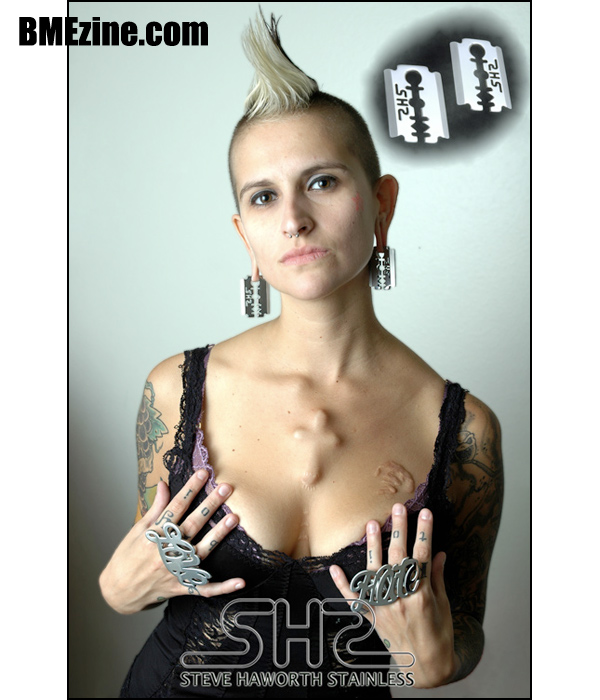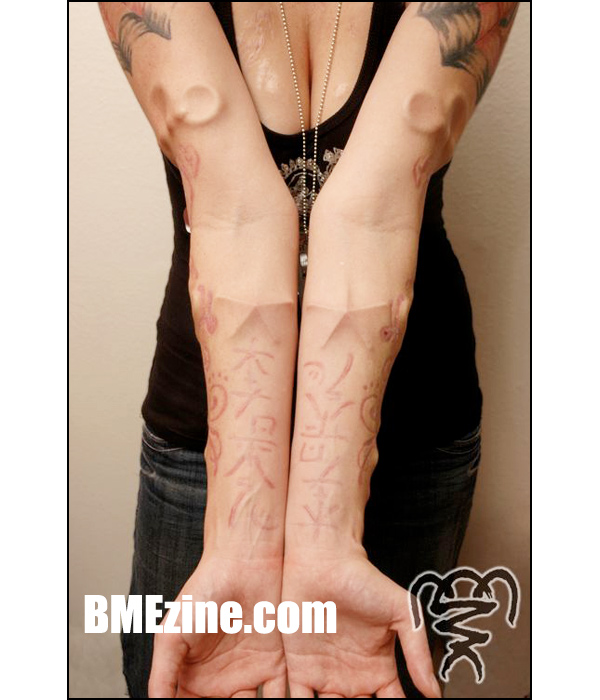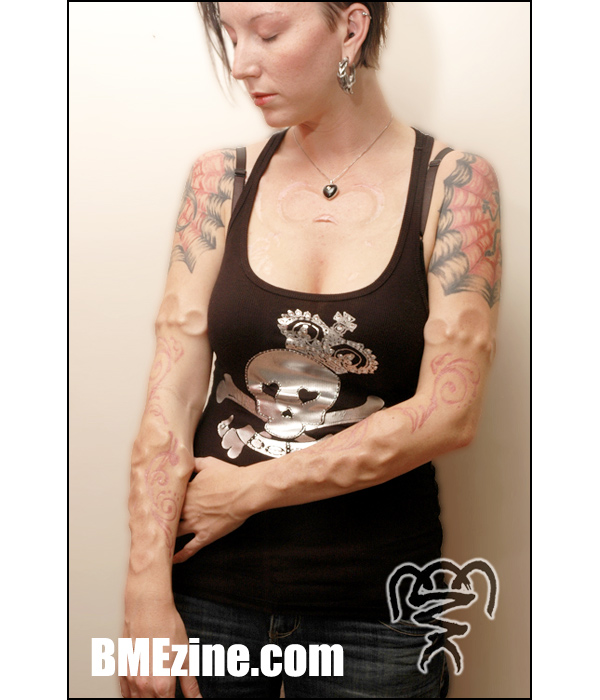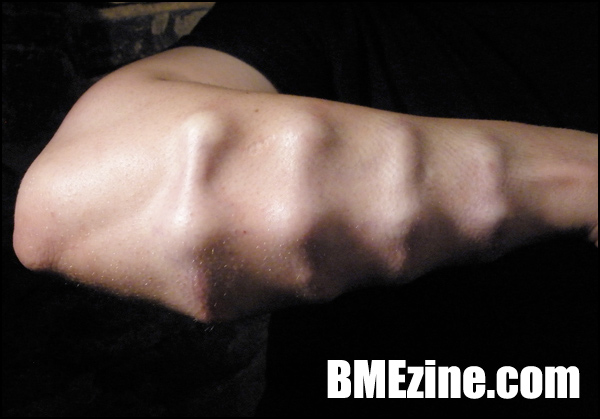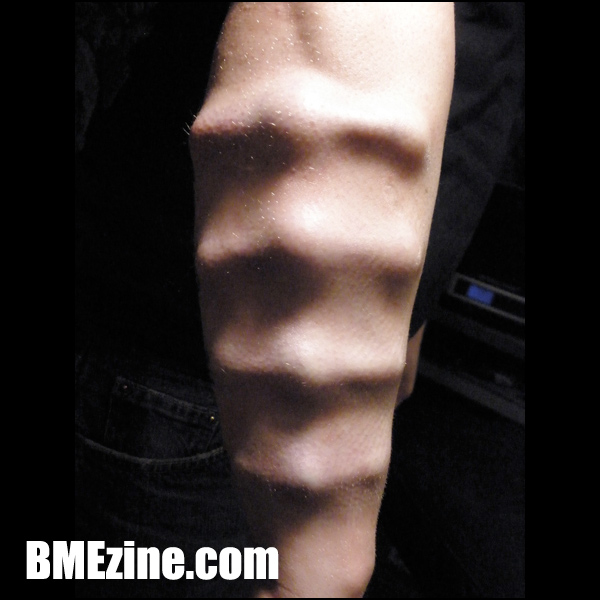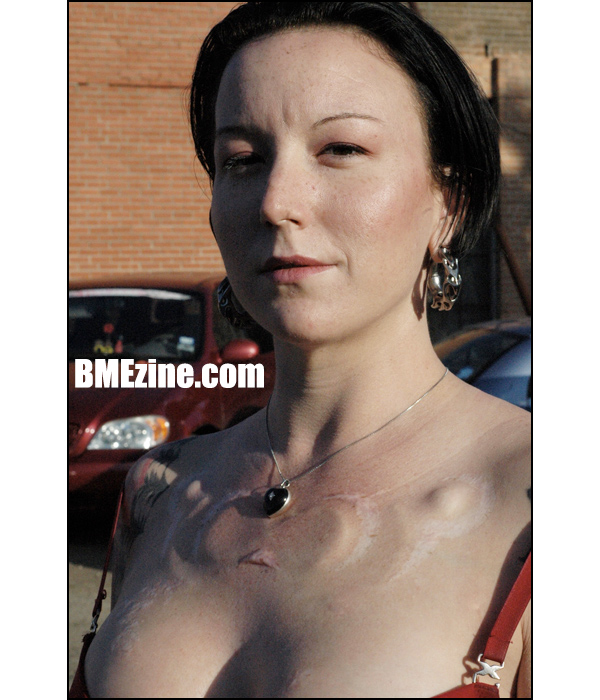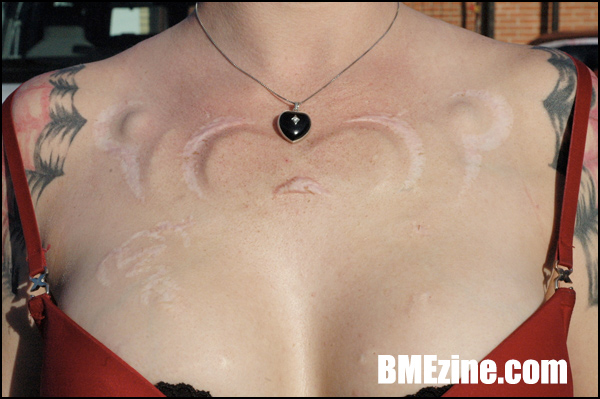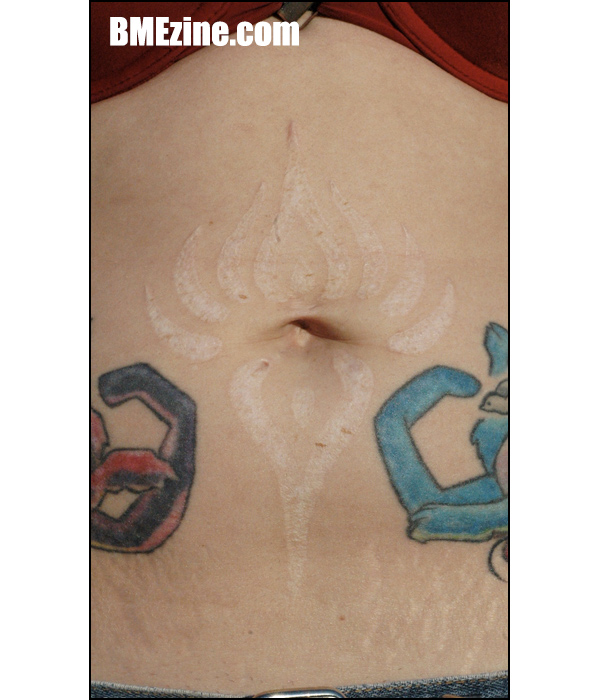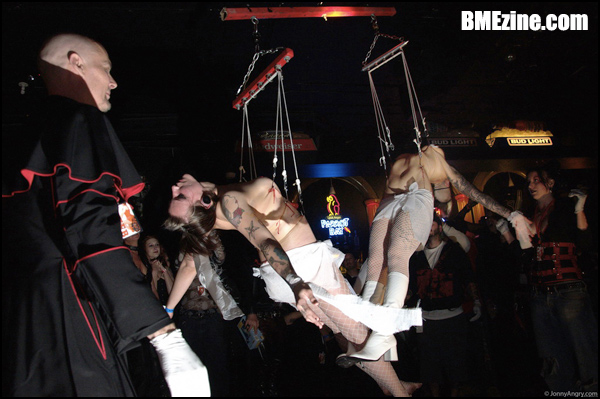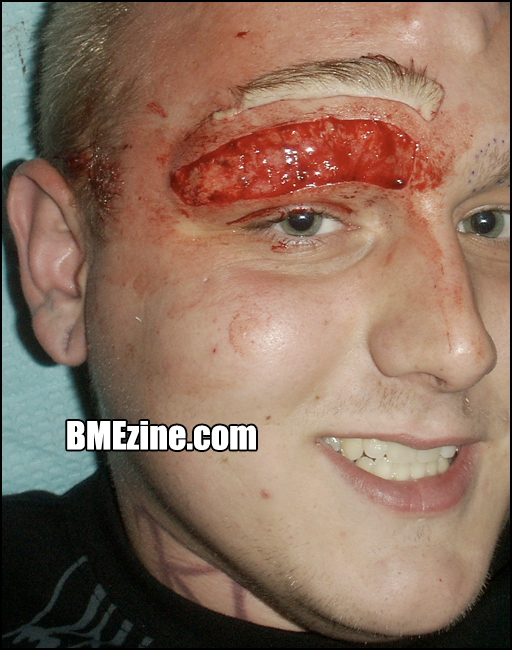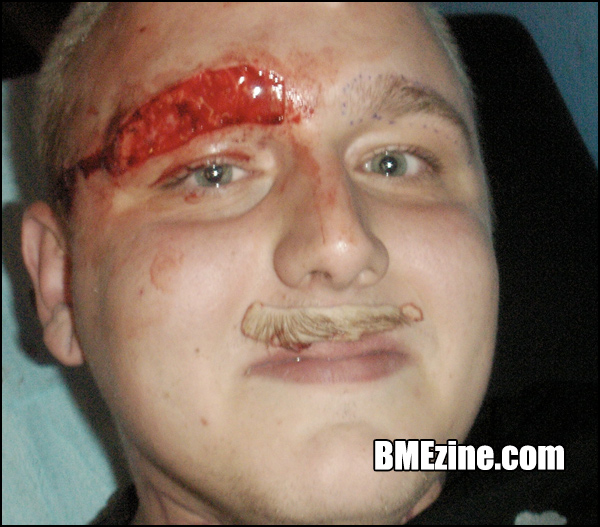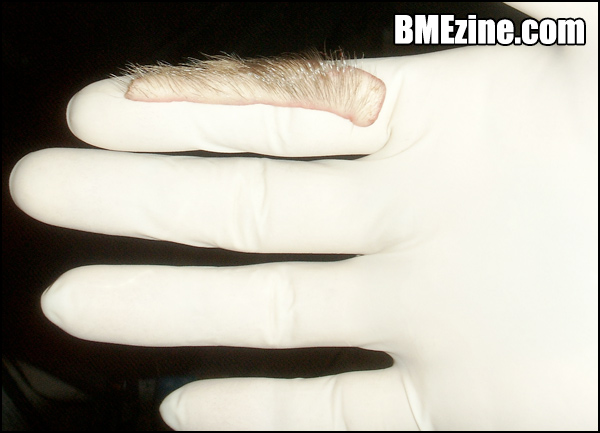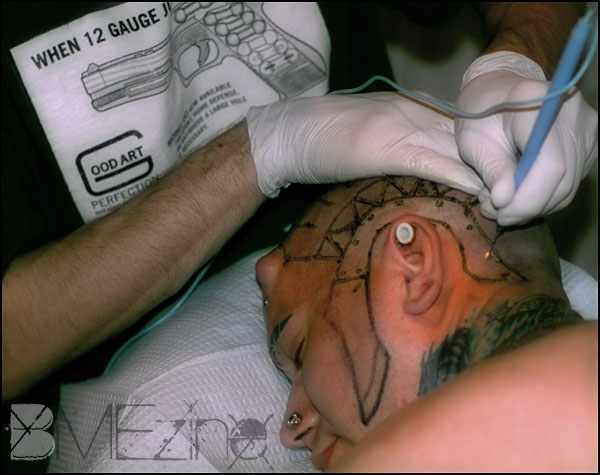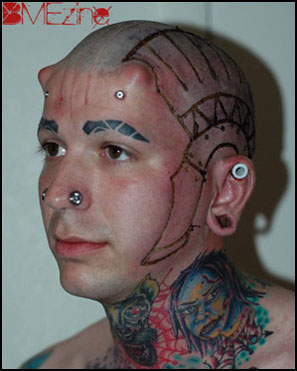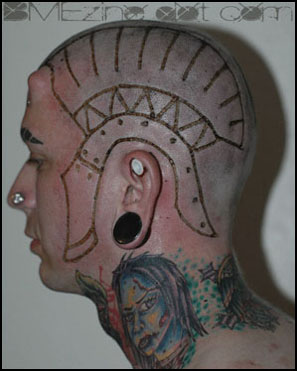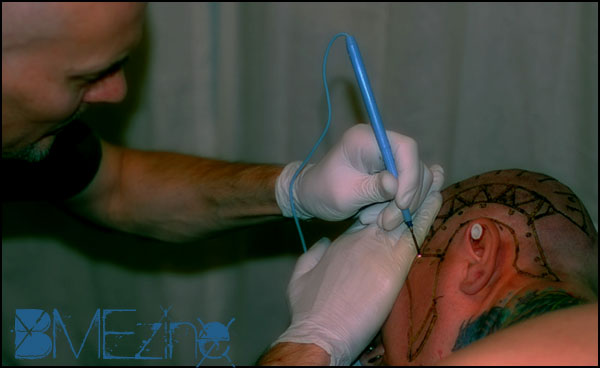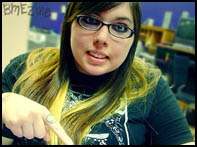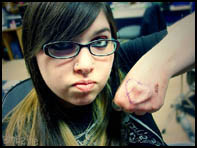I spoke with Emilio about his most recent facial sculpting endeavor. It’s reminiscent of the work Steve Haworth performed on The Stalking Cat in 2001. While Cat’s procedure was more of a septum relocation/removal, Cain’s procedure includes significant removal of his nostrils and his septum. Look for more photos in the next BME update and hopefully I’ll post some healed photos once they’re submitted.
Says Emilio (edited for clarity):
My friend Cain from Bogota, Colombia, was waiting a long time to modify his physical appearance. So last year, I took a trip to Bogota and saw, when I met Cain, he had a very hard, rough appearance; even with no modifications, he impressed me. He told me he wanted to look more evil, you know, like the devil itself, and to pay tribute to the name Cain.
I started by giving him silicone horns, and had to take a few trips there for make them bigger — our goal is 2-inch horns, and to eventually add another set of 1.5-inch horns, manufactured by Steve Haworth. Cain was really happy with the work I did and wanted to go to the next step: making his nose like the bad guy from Harry Potter and the Order of the Phoenix, Lord Voldemort, but with a very personal touch.
When I came home to Caracas, my big friend Cesar Gonzalez (a plastic surgeon, specialized in nose reconstruction) and I had a very long conversation about Cain’s situation. When I went back to Colombia for a tattoo convention, I did the procedure on him — he was more than pleased, and very soon you will see the result. I want to give thanks to BME, and a special thanks to Lukas Zpira for helping me a long time ago to make my first step into the modification world.
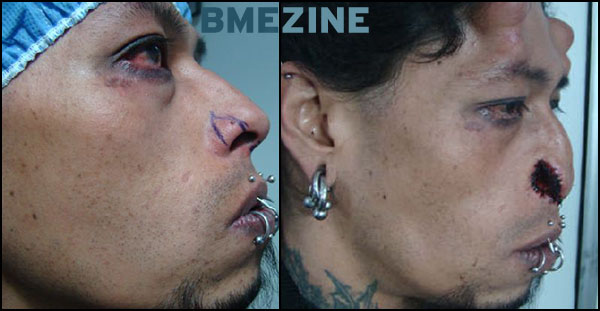
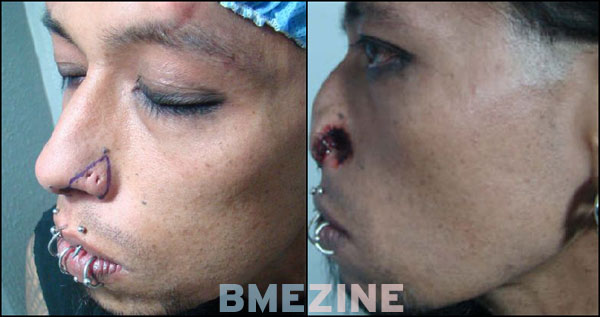
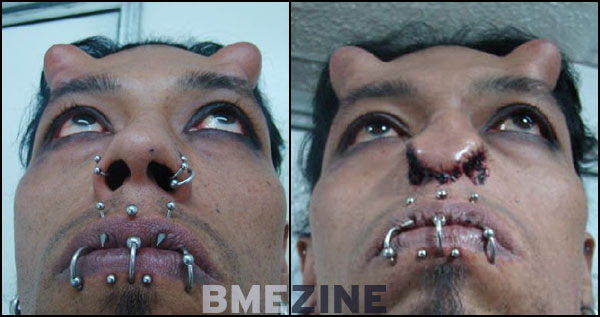
See more in Facial Restructuring (Facial Sculpting)
As indicated by Emilio, only a trained professional should attempt this procedure and even then, there are serious risks to consider as it is definitely an advanced body modification! Don’t try this at home!
